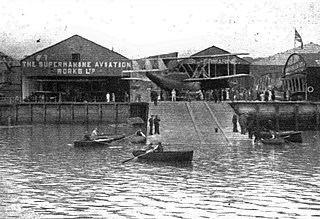
Supermarine was a British aircraft manufacturer. It is most famous for producing the Spitfire fighter plane during World War II. It also built a range of seaplanes and flying boats, winning the Schneider Trophy for seaplanes with three wins in a row in 1927, 1929 and 1931. After the war, the company produced a series of Jet fighters.

Reginald Joseph Mitchell was a British aircraft designer who worked for the Southampton aviation company Supermarine from 1916 until 1936. He is best known for designing racing seaplanes such as the Supermarine S.6B, and for leading the team that designed the Supermarine Spitfire.

The Napier Lion is a 12-cylinder, petrol-fueled 'broad arrow' W12 configuration aircraft engine built by D. Napier & Son from 1917 until the 1930s. A number of advanced features made it the most powerful engine of its day and kept it in production long after other contemporary designs had been superseded. It is particularly well known for its use in a number of racing designs, for aircraft, boats and cars.

A motorboat, speedboat or powerboat is a boat that is exclusively powered by an engine.
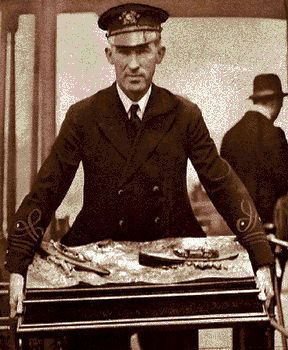
Garfield Arthur "Gar" Wood was an American inventor, entrepreneur, and championship motorboat builder and racer who held the world water speed record on several occasions. He was the first man to travel over 100 miles per hour on water.

The Liberty L-12 is an American water-cooled 45° V-12 aircraft engine displacing 1,649 cubic inches (27 L) and making 400 hp (300 kW) designed for a high power-to-weight ratio and ease of mass production. It saw wide use in aero applications, and, once marinized, in marine use both in racing and runabout boats.

The Rolls-Royce R is a British aero engine that was designed and built specifically for air racing purposes by Rolls-Royce Limited. Nineteen R engines were assembled in a limited production run between 1929 and 1931. Developed from the Rolls-Royce Buzzard, it was a 37-litre capacity, supercharged V-12 capable of producing just under 2,800 horsepower (2,090 kW), and weighed 1,640 pounds (770 kg). Intensive factory testing revealed mechanical failures which were remedied by redesigning the components, greatly improving reliability.

The Blackburn Iris was a British three-engined biplane flying boat of the 1920s. Although only five Irises were built, it was used as a long-range maritime reconnaissance aircraft by the Royal Air Force, where it equipped a squadron for four years, being used to carry out a number of notable long-distance flights. The final version of the Iris, the Iris Mark V was developed into the aircraft that replaced it in Squadron service, the Blackburn Perth.
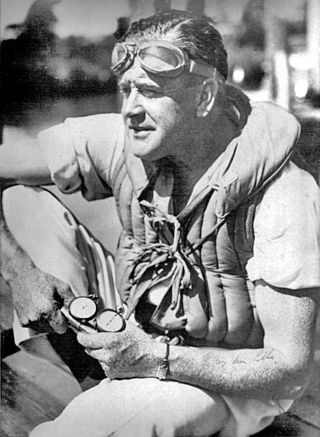
Hubert Scott-Paine was a British aircraft and boat designer, record-breaking power boat racer, entrepreneur, inventor, and sponsor of the winning entry in the 1922 Schneider Trophy.

The British Power Boat Company was a British manufacturer of motor boats, particularly racing boats and later military patrol boats.
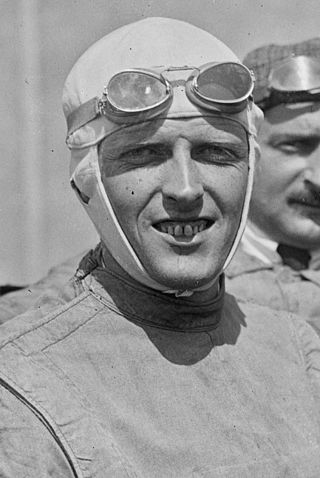
Sir Henry O'Neal de Hane Segrave was an early British pioneer in land speed and water speed records. Segrave, who set three land and one water record, was the first person to hold both titles simultaneously and the first person to travel at over 200 miles per hour (320 km/h) in a land vehicle. He died in an accident in 1930 shortly after setting a new world water speed record on Windermere in the Lake District, England. The Segrave Trophy was established to commemorate his life.

The Harmsworth Cup, popularly known as the Harmsworth Trophy, is a historically important British international trophy for motorboats.

The Supermarine S.4 was a 1920s British single-engined monoplane built by the company Supermarine. Designed by a team led by the company's chief designer, R. J. Mitchell, it was designed to compete in the 1925 Schneider Trophy contest.

The Supermarine Sea Lion II was a British racing flying boat built by the Supermarine Aviation Works. Designed by Reginald Mitchell, it was a modification of Supermarine's Sea King II. Sea Lion II was powered by a 450 hp (340 kW) Napier Lion engine.
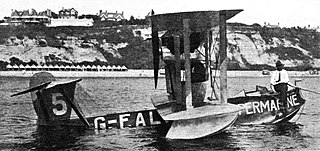
The Supermarine Sea Lion I was a British racing flying boat designed and built by Supermarine for the Schneider Trophy contest at Bournemouth, England, in September 1919. It was based on a version of the Supermarine Baby, the first single-seat flying boat fighter aircraft to be designed and built in the United Kingdom, that first flew in February 1918.

The Supermarine Sea King was a British single-seat amphibious biplane fighter designed by Supermarine in 1919. Developed from the Supermarine Baby and the Supermarine Sea Lion I, the Sea King was a single seater biplane powered by a pusher 160 horsepower (120 kW) Beardmore engine. It first flew in early 1920 and was exhibited by Supermarine at the 1920 Olympia Show in London. The company released drawings of the aircraft's design prior to the show; what it exhibited was probably a modified Supermarine Baby.

The Supermarine Baby was a First World War fighter aircraft that was the earliest example of a single-seat flying boat fighter to be built in the United Kingdom. It was designed by Supermarine to meet a 1917 Navy Board specification which stipulated the aircraft have a speed of 95 knots, a ceiling of 20,000 feet (6,100 m), and be capable of being launched from ships at sea. When it first flew in February 1918 it was the smallest and fastest flying boat then in existence.

The Supermarine Seal II was a British flying boat developed by Supermarine after it secured a British Air Ministry order for a prototype three-seater fleet spotter amphibian. The prototype, which had to be capable of landing on Royal Air Force (RAF) aircraft carriers, was designed by Supermarine's R.J. Mitchell, who incorporated suggestions made after the Supermarine Commercial Amphibian achieved second place after it was entered for an Air Ministry competition in 1920.
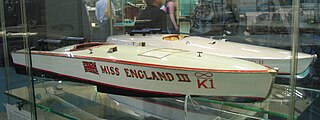
Miss England III was the last of a series of speedboats used by Henry Segrave and Kaye Don to contest world water speed records in the 1920s and 1930s. She was the first craft in the Lloyds Unlimited Group of high-performance speedboats created to make attempts on the water speed record, and consequently wore the registration 'K1' with the corresponding 'infinity' symbol.

Miss England I was the first of a series of speedboats used by Henry Segrave and Kaye Don to contest world water speed records in the 1920s and 1930s.





















